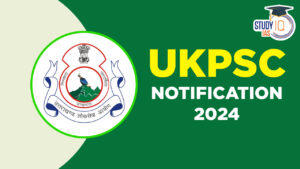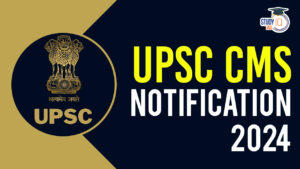Daily Current Affairs for UPSC 2023
Q) Which one of the following statements is not correct about the Socio-Economic and Caste Census of 2011?
- It was the first caste-based census since 1931 Census of India.
- It examined the socio-economic status of rural and urban households.
- It was the first paperless census in India conducted on electronic devices.
- It was conducted under administrative jurisdiction of Ministry of Statistics and Programme Implementation.
Daily Current Affairs for UPSC – 16 August April 2023
Explanation:
The Supreme Court is scheduled to hear a batch of petitions challenging the verdict of the Patna High Court, which upheld the Bihar government’s ongoing caste-based census survey.
- Option (4) is the correct answer: Caste based census or the Socio-Economic and Caste Census (SECC) is a comprehensive study that examines the socio-economic status of rural and urban households, and it also gather information about the caste distribution within the population. SECC-2011 was the first caste-based census since 1931 Census of India. SECC-2011 is also the first paperless census in India conducted on hand-held electronic devices. SECC-2011 is a study of socio economic status of rural and urban households and allows ranking of households based on predefined parameters. Ministry of Rural Development commenced the SECC 2011 on 29th June, 2011 through a comprehensive door to door enumeration across the country. Moreover, census in urban areas of India is under the administrative jurisdiction of the Minister of Housing and Urban Affairs and Caste Census under the administrative control of Ministry of Home Affairs, Registrar General and Census Commissioner of India (under the overall coordination of Ministry of Rural Development).
Q) Consider the following statements about Metagenomics:
- It is thestudy of microbes in their natural living environment
- It examines the genomic composition of an entire organism,including each of the microbes that exist within it.
- It requires culturing or isolating individual speciesbefore sequencing their genomes.
- It uses gene sequencing to discover proteins in samples from different environments across Earth.
How many of the statements given above are correct?
- Only one
- Only two
- Only three
- All four
Explanation:
Recently, the scientific community from the Nigerian Centre for Disease Control conducted a study utilizing metagenomic sequencing for pathogen surveillance.
- Statements 1, 2, and 4 are correct but Statement 3 is incorrect: Metagenomics is the study of microbes in their natural living environment, which involves the complex microbial communities in which they usually exist.
- It examines the genomic composition of an entire organism, including each of the microbes that exist within it. It facilitates direct sequencing of patient samples, removing the need for prior knowledge of the infectious agent.
- It refers to the application of sequencing techniques to analyse the totality of the genomic material (DNA or RNA) present in a sample.
- It is different from conventional sequencing methods, which requires culturing or isolating individual species before sequencing their genomes.
- It uses gene sequencing to discover proteins in samples from environments across Earth, microbes living in the soil, in extreme environments like hydrothermal vents, deep in the oceans and in our guts and on the skin.
- It enables us to understand the diversity, abundance, and interaction of microbes in any system.
Q) Which of the following statements are correct about the PM e-bus Sewa scheme?
- Under the Scheme, 1000 e-buses will be deployed mainly across the metropolitan cities of India.
- The Scheme will be implemented on a Public-Private-Partnership model and will support bus operations for 10 years.
Select the correct answer using the code given below:
- 1 only
- 2 only
- Both 1 and 2
- Neither 1 nor 2
Explanation:
An e-bus is any bus whose propulsion and accessory systems are powered exclusively by a zero-emissions electricity source.
- Statement 1 is incorrect but Statement 2 is correct: Recently, the Union Cabinet has approved a bus scheme “PM-e Bus Sewa” for augmenting city bus operation by 10,000 e-buses on Public-Private-Partnership (PPP) model. The Scheme would have an estimated cost of Rs.57, 613 crore, out of which support of Rs.20, 000 crore will be provided by the Central government. The Scheme will support bus operations for 10 years. The scheme will cover cities of Three lakh and above population as per census 2011 including all the Capital cities of Union Territories, North Eastern Region and Hill States. Under this scheme priority will be given to cities having no organized bus service. The scheme aims to enhance urban infrastructure through green mobility initiatives.
Q) Consider the following statements:
- Deemed forests were conceived as areas that have not been notified under the Indian Forest Act, 1927, but are recorded as forests in government records.
- Once forests are “deemed”, they cannot be de-reserved or utilised for non-forest purposes without prior approval of the Central Government.
- The Forest (Conservation) Amendment Bill, 2023 stipulates that only those lands that were officially classified and documented as ‘deemed forest’ after the year 1980 will receive protection.
How many of the statements given above are correct?
- Only one
- Only two
- All three
- None
Explanation:
The Odisha government has withdrawn a controversial order which stated that the concept of “deemed forest” has been removed in accordance with the amended Forest Conservation Act, 2023.
- Statements 1 and 2 are correct: There is no comprehensive definition for “forests” in India. The ambiguity around this term was clarified by the Supreme Court in T N Godavarman Thirumulpad v. Union of India and Others (Godavarman case) where it defined “forest” to include any piece of land that resembles the dictionary meaning of forest for the purpose of the Forest (Conservation) Act, 1980. This case also conceptualised “deemed forests”. Deemed forests were conceived as areas that have not been notified under the legislation, but are recorded as forests in government records. These are lands that have characteristics of forests, irrespective of ownership. Once forests are “deemed”, they cannot be de-reserved or utilised for non-forest purposes without prior approval of the Centre. However, recently, the Forest (Conservation) Amendment Bill, 2023 stipulates that only those lands that were notified as ‘forest’ under the Indian Forest Act 1927, any other relevant law or were recorded as ‘forests’ in government records will be acknowledged as ‘forests’ under the Act as well.
- Statement 3 is correct: The Forest (Conservation) Act, 1980, is an important Central statute for the conservation of forests in India. The recently passed Forest (Conservation) Amendment Bill, 2023 stipulates that only forests that have been officially classified and documented as ‘deemed forest’ after the year 1980 will receive protection.
Q) Sujalam Sufalam Jal Abhiyan, a campaign of water storage on Public-Private-Partnership model, is implemented by which of the following?
- The Gujarat Water Resources Department
- The Department of Water Resources under Ministry of Jal Shakti
- The National Institution for Transforming India (NITI) Aayog
- Reliance Foundation in partnership with the World Bank
Explanation:
- Option (1) is correct: Gujarat is a semi-arid state in India that is prone to droughts. In order to address the water scarcity problem, the Gujarat government launched the Sujalam Sufalam Jal Abhiyan (SSJA), a campaign of water storage on Public-Private-Partnership model, in 2018.
- The main objective of the SSJA is to increase the water storage capacity of the state by constructing new water bodies, desilting existing water bodies, and repairing water infrastructure.
- The SSJA is implemented by the Gujarat Water Resources Department (GWRD). The GWRD has divided the state into 10 watershed development units.
- Each watershed development unit has a project implementation team that is responsible for implementing the SSJA in that area.
- In the first five years of the scheme, the state government has constructed over 100,000 water bodies, desilted over 50,000 water bodies, and repaired over 10,000 kilometers of canals.
- These activities have helped to increase the water storage capacity of the state by over 86 million cubic meters.


 List Of Tribal Festivals In India
List Of Tribal Festivals In India
 UKPSC Notification 2024, Exam Date and S...
UKPSC Notification 2024, Exam Date and S...
 Combined Medical Services Examination, 2...
Combined Medical Services Examination, 2...

















